Since early April, anyone entering New Zealand has had to go through managed isolation in a designated quarantine hotel. Mandated by the government to minimize the spread of COVID-19, the managed isolation process has helped New Zealand maintain a safe and relatively normal way of life since the pandemic began.
Friendly disclaimer: this post is going to be about my own personal experience going through the New Zealand managed isolation process and everything leading up to it. Your experience can and probably will vary! Also, rules or procedures are changing all the time, so make sure to look up any necessary steps you need to take before you leave.
If you test positive for COVID in isolation or are exposed to anyone who has, they transfer you from managed isolation to a quarantine facility for more intensive care. As I didn’t go through quarantine, I’ll only be talking about the more relaxed managed isolation.
I’ll be adding a bunch of relevant links to official sources where I can. Whether you’re applying for a visa or about to go through the isolation process, or simply curious about how it works, I hope this article helps you know what to expect. This post will be quite comprehensive, so apologies for the novel in advance!
Disclosure: Some of the links below are affiliate links. When you purchase through links on my site, I may make a small commission (at no extra cost to you!).
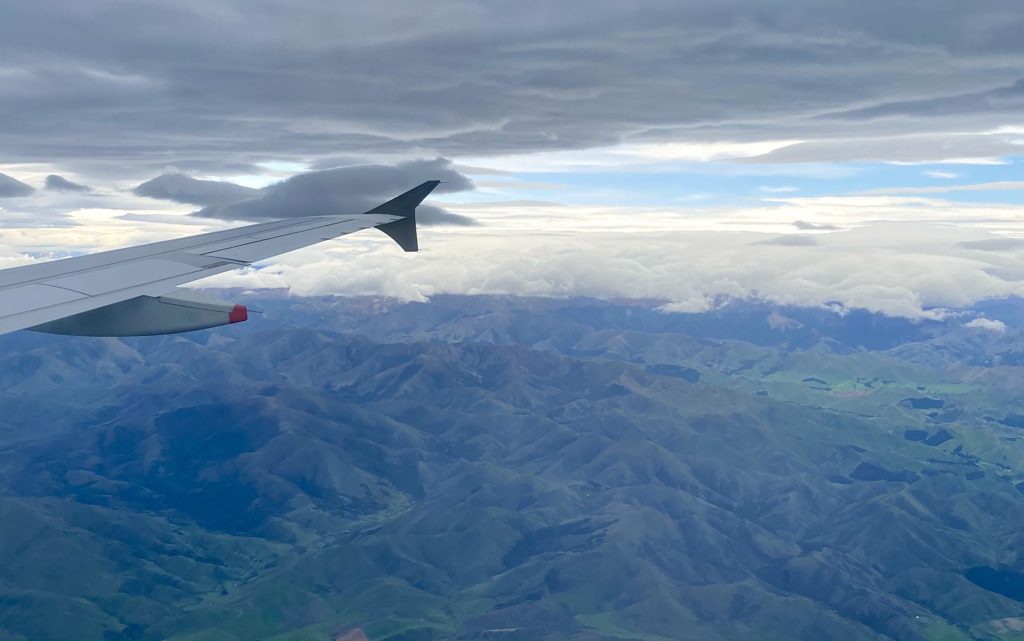
General information on New Zealand managed isolation
The government is currently contracting over twenty hotels for New Zealand managed isolation. They are in five cities: Auckland, Hamilton, Rotorua, Wellington, and Christchurch. You are assigned to a hotel randomly regardless of your final destination. The government will provide transportation to your hotel via coach bus or a specially chartered flight. They will also provide you with transport back to Auckland if you need it.
The isolation process itself lasts exactly fourteen days from when your flight lands in New Zealand, assuming you have no symptoms and tested negative on the day 11 COVID test (the day you arrive is considered day 0). That means if your flight lands at 5:45 am on a Saturday, you are free to leave at 5:45 am two Saturdays later.
Generally, going through isolation will cost you NZ$3,100 (unless you are exempt). They bill the full amount to you after you leave and you can pay in installments. You can also apply for a waiver on compassionate or financial hardship grounds.
Before entering New Zealand managed isolation
Right to enter New Zealand
Before doing anything else, you need to make sure you have a legal right to enter New Zealand. People from visa waiver countries (like the United States) who were able to enter NZ before with just an NZeTA now need a proper visa. Since the pandemic began, the country has closed its borders to nearly everyone except:
- citizens or permanent residents
- residents with valid travel conditions who have already lived in NZ before
- partners or children of a NZ citizen or permanent resident who hold a visa based on that relationship
- diplomats
- Australian citizens or permanent residents who normally live in NZ
I fell into the third category, partner of a New Zealand citizen. I had to get approved for a Critical Purpose Visitor visa to enter the country. Check out my other blog post explaining more about the CPVV process!
New Zealand managed isolation allocation voucher
Once you can enter the country, the next thing you need to do is get a New Zealand managed isolation allocation voucher. This tells the government when you’re arriving, how many people you’re traveling with, and whether you have any special dietary or accessibility needs. They also ask about your final destination within the country. Unfortunately, they don’t take it into account when assigning you a hotel!
I highly recommend that you print out your allocation voucher and a copy of your visa. It makes your journey through the airport much less stressful!
Flights
After securing a spot in isolation, you have 48 hours to book a flight and add the details to your allocation booking online. You should definitely make sure to get the allocation first. Otherwise, you have to pay change fees if the date you’re flying on is completely booked out.
To anyone flying from the USA, Air New Zealand is the only airline that is reliably flying without cancellations at the moment. They are flying twice a week from Los Angeles on flight NZ1.
At the airport
My partner Ben and I flew Air New Zealand from Los Angeles to Auckland on 22 October 2020. In the international terminal, only one restaurant (Earl of Sandwich) and one shop with snacks and books were open.
I couldn’t check in on the app so we spoke to someone at the check-in counter. She looked over my passport, visa, and New Zealand managed isolation voucher and checked our bags. She scribbled a few things on our boarding passes to note that our passports were checked. After that we were ready to go.
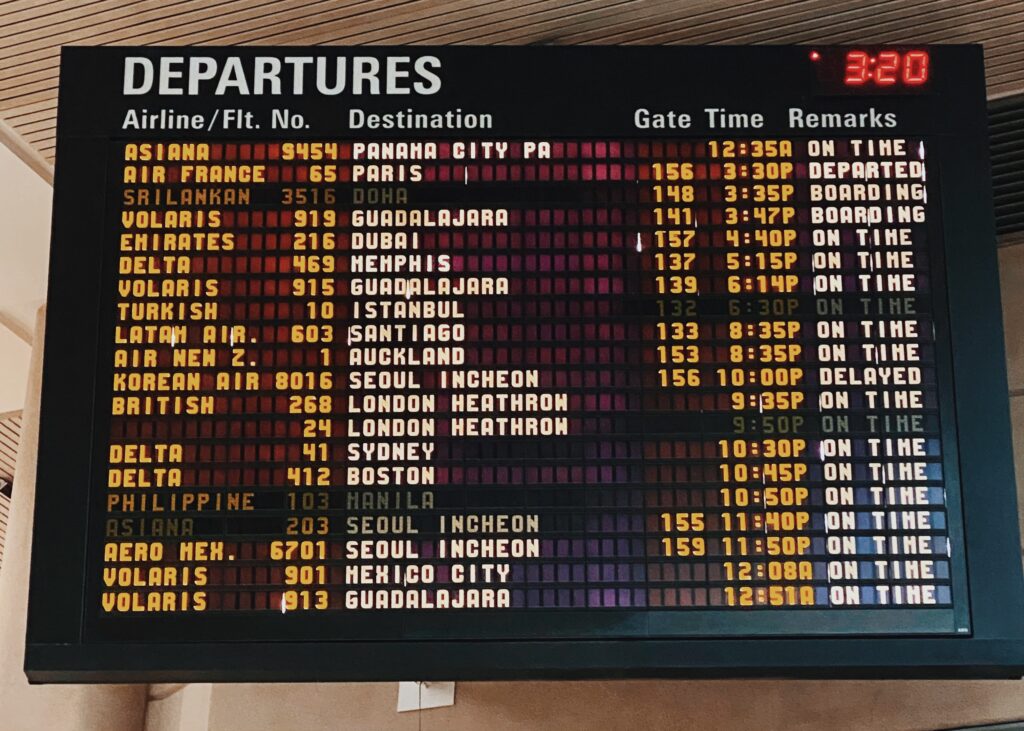
Going through security was relatively normal, if not a bit empty due to the lack of flights. Once through security, there were a few more snack shops and a Starbucks open along the way to our gate. Most restaurants and duty-free were closed.
At the gate, they made announcements about having to go through a secondary passport check at the counter. This applies only to people who came in through a connecting flight on a different airline.
Onboard
Our flight was about 90% full, but we got lucky and didn’t have anyone sitting next to us. An Air New Zealand representative told us that they aren’t blocking off any seats for social distancing and would sell every seat if the demand was there. You have to wear a mask throughout the entire flight, however (except when eating and drinking).
Meal service on the flight seemed very similar to pre-COVID. They served us pre-packaged tray meals for dinner and breakfast and the flight attendants did several full beverage services. The twelve-hour flight ended up going by pretty quickly!
Entering New Zealand
First steps
Our flight landed in Auckland at 5:45 am. The flight attendants called for people transiting through New Zealand to get off first. They are escorted to a different part of the airport. Once they made the announcement, it took about 30 minutes to get everyone off the plane.
We then got into a rather long line for preliminary health questions and a temperature check. Airport workers let families with young kids jump to the front of the line, which was super nice after such a long flight. It took us about an hour to make it through this check. At this station, they told us we would be isolating in Auckland and gave us vouchers for the bus there.
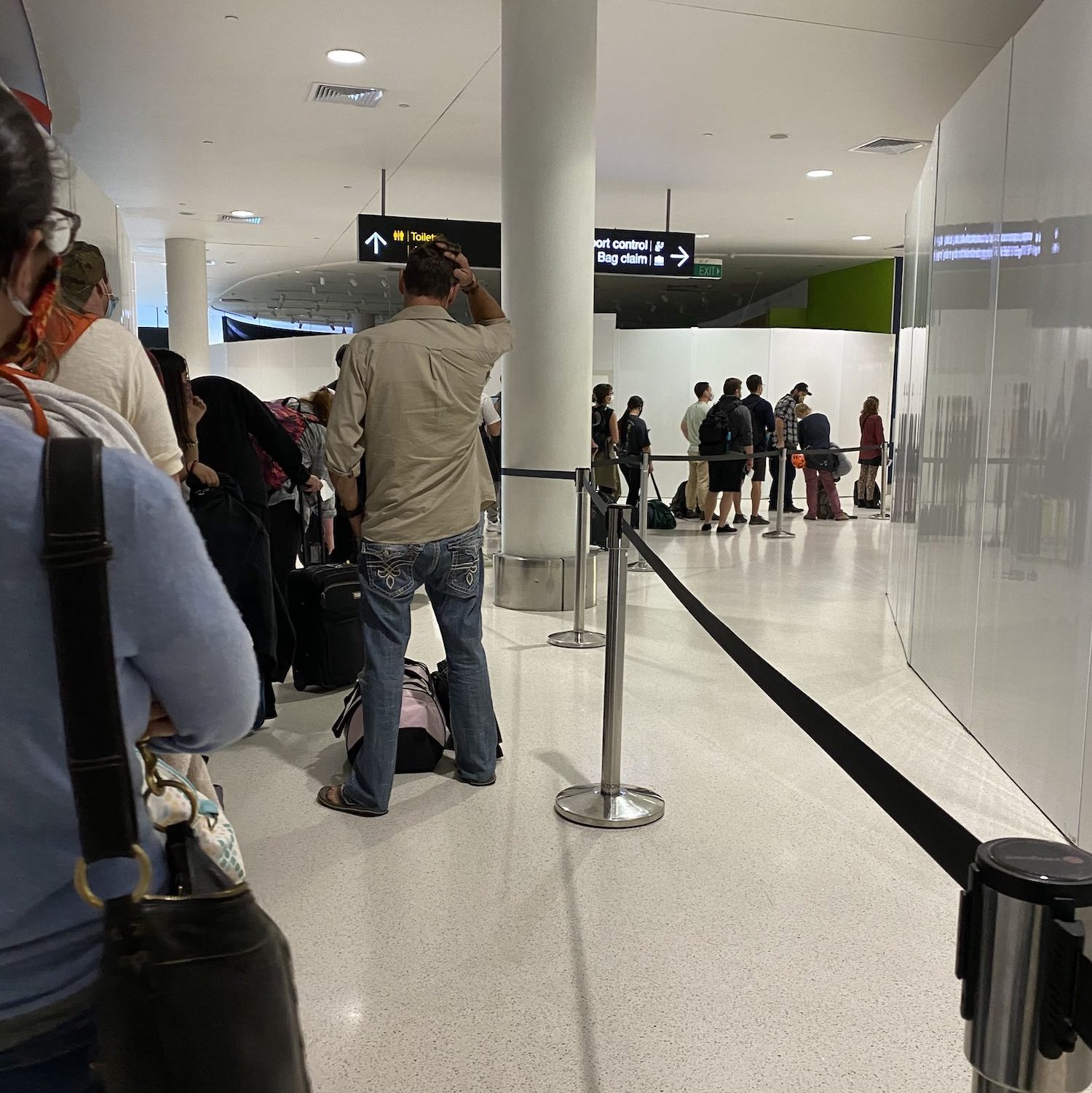
Customs & immigration
Straight past the temperature checks were the immigration officers. They closed off the self-service passport scanning kiosks, so we talked to an officer in person. She checked my passport and visa again, asked us a few questions about our final destination post-isolation, and let us through.
We went downstairs and picked up our checked bags (which were thankfully already spinning around the carousel). We then headed through customs, which was the same as it normally was before COVID. An officer looked over our customs declarations form, asked us about any fresh food we were bringing, and had us put our bags through a scanner.
The officer scanning my bag asked me whether I had declared hiking boots. I freaked out – you know how you always feel like a criminal when going through security? Thankfully, we had a laugh when they ended up being a pair of heeled booties with laces that have no business walking through mud or dirt. Be sure to declare actual hiking boots if you are bringing them!
Once through customs, we stood in yet another line to check our names off of a list. Here, they told us that we would be staying at the M Social Hotel. They gave us a sheet with some general information and herded us onto a rather nice coach bus. Government workers loaded our bags and we were off!
At the New Zealand managed isolation hotel
After a 40-minute drive to our hotel, a Ministry of Health worker came onto our bus to go over some ground rules: wear a mask at all times when outside of your room, no more than one bubble in an elevator at one time, no smoking except in the smoking area. She took a few people off of the bus at a time to check-in.
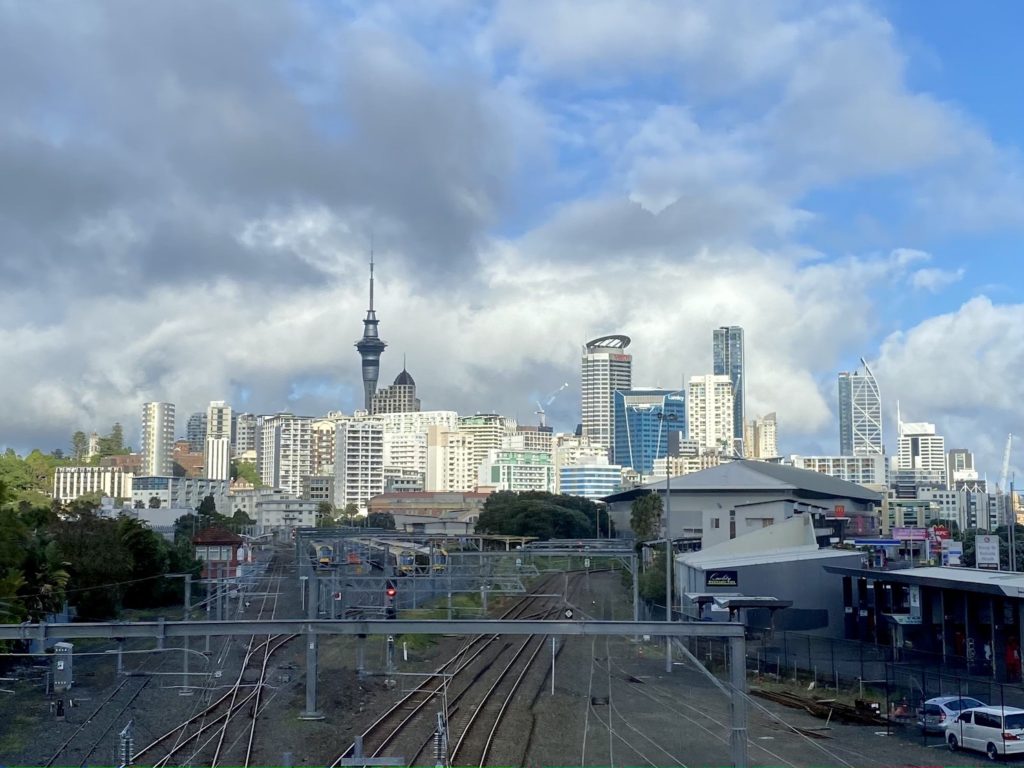
They handed us off to a few different government and Army workers to go over passport and contact details, put a credit card down for any in-room purchases, and do another temperature check. We ordered breakfast for the day and were given some hefty info packets.
Ben and I were ecstatic to finally make it to our room, take a shower, and get some rest. All told, the whole process from touchdown to being in our hotel room took a little over 3 hours. The whole process seemed super organized and well thought out. Everyone seemed to know what they were doing and were very welcoming and kind. The entire situation isn’t ideal, but classic Kiwi hospitality shines through and makes it bearable.
Life in New Zealand managed isolation
I’m going to break this bit down by category to make it easy to reference. Again, this is specific to the hotel we were assigned (M Social Auckland) and will be different everywhere!
Room
The M Social Hotel is located right on the water in Auckland’s CBD. The decor is very modern and all rooms have a view of the bay. Our room wasn’t huge but it was great!
We had a small “kitchen” area with a mini-fridge and kettle, a decent bathroom, a TV, a table and chair, and a lounge sofa. Most importantly, the bed was massive and very comfortable. The room was clean and got a lot of natural light during the day. There are blackout curtains for those that need a dark room to sleep.
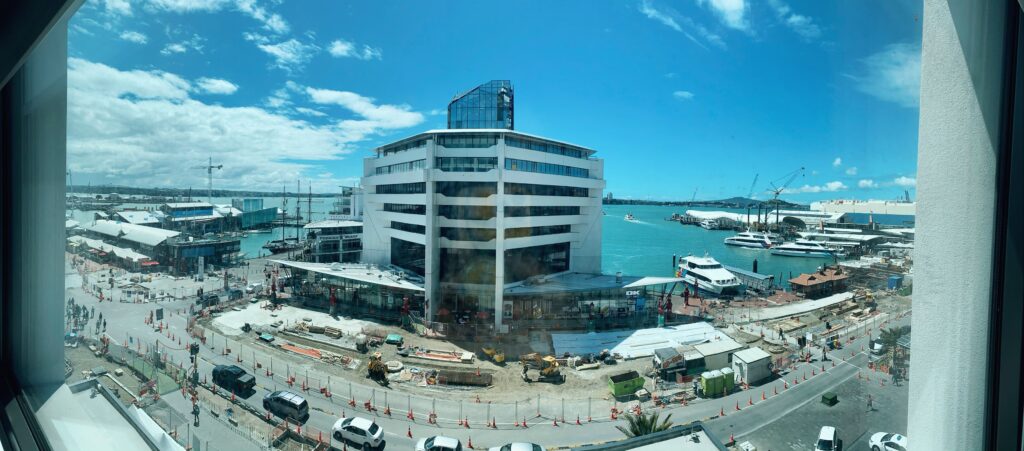
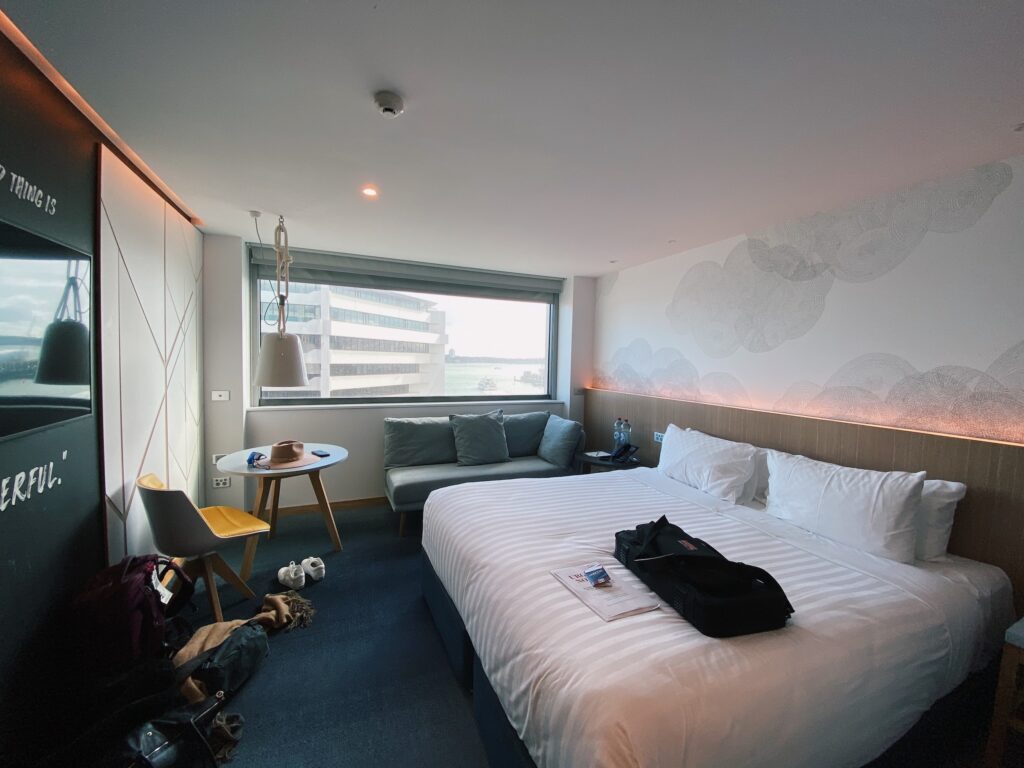
We were provided with basic hotel toiletries: shampoo, conditioner, body wash, soap, and lotion. Our kitchen area was stocked with instant coffee (regular and decaf), a few types of tea, hot chocolate mix, sugar packets, and a small container of milk in the fridge. There were a few bottles of water in the room when we got there and we often called reception to ask for more.
They provided us with a complimentary code for the wifi that worked for the entirety of our stay. The wifi was fast and we had no problems downloading anything from the internet.
My biggest, and probably only, complaint with our room would be that our window didn’t open at all. It would have been nice to be able to feel a bit of the outside world without having to go downstairs. And although we couldn’t notice it since we were always in it, I imagine our room didn’t smell too fresh after two weeks without cleaning or fresh air.
Food in New Zealand managed isolation
Meals in New Zealand managed isolation are provided three times a day and are delivered in brown paper bags on your doorstep. Each meal has a two-hour delivery window, but we found that our meals came consistently at the same time (within 15 minutes) every day. By the end of the two weeks, I definitely developed a Pavlovian response to rustling bags and doorbells.
On the day we arrived, we got a piece of paper with a code to download a meal ordering app. We would order a week’s worth of meals at a time. Under each meal and at the confirm order screen, you could add notes to make special requests. You could also choose to skip certain meals if you wanted.
Each meal had these options:
- Breakfast: choice between a continental breakfast (meats, cheese, bread & baked goods) or an egg dish (quiche, frittata, etc.) with bacon, hash brown, and tomato. Both options came with cereal, yogurt, and milk or juice.
- Lunch: two choices that changed daily. These meals were usually a bit lighter than dinner. Both options came with bread, a piece of fruit, and a dessert.
- Dinner: three choices that changed daily. These were full-on meals with several sides. Two choices of dessert, which could be either a fruit plate, a cheese plate, or a baked dessert.
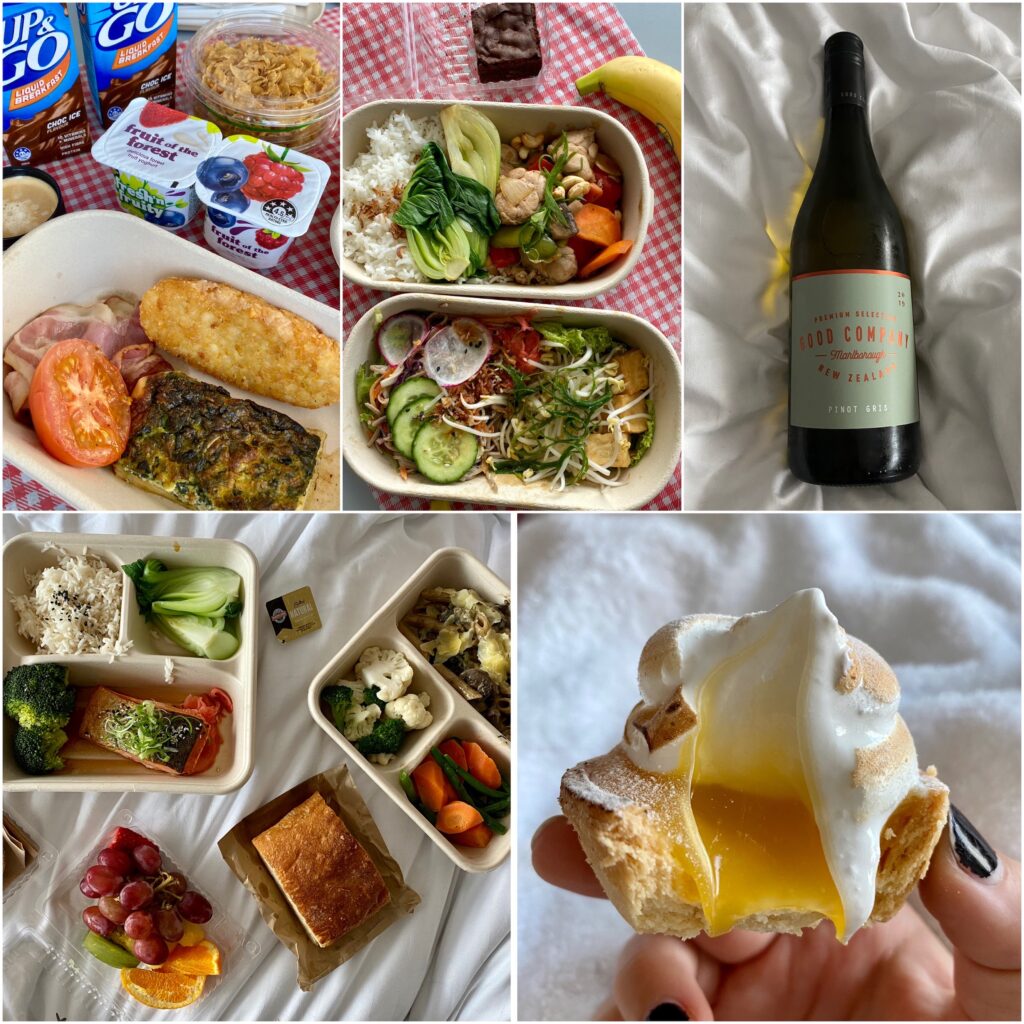
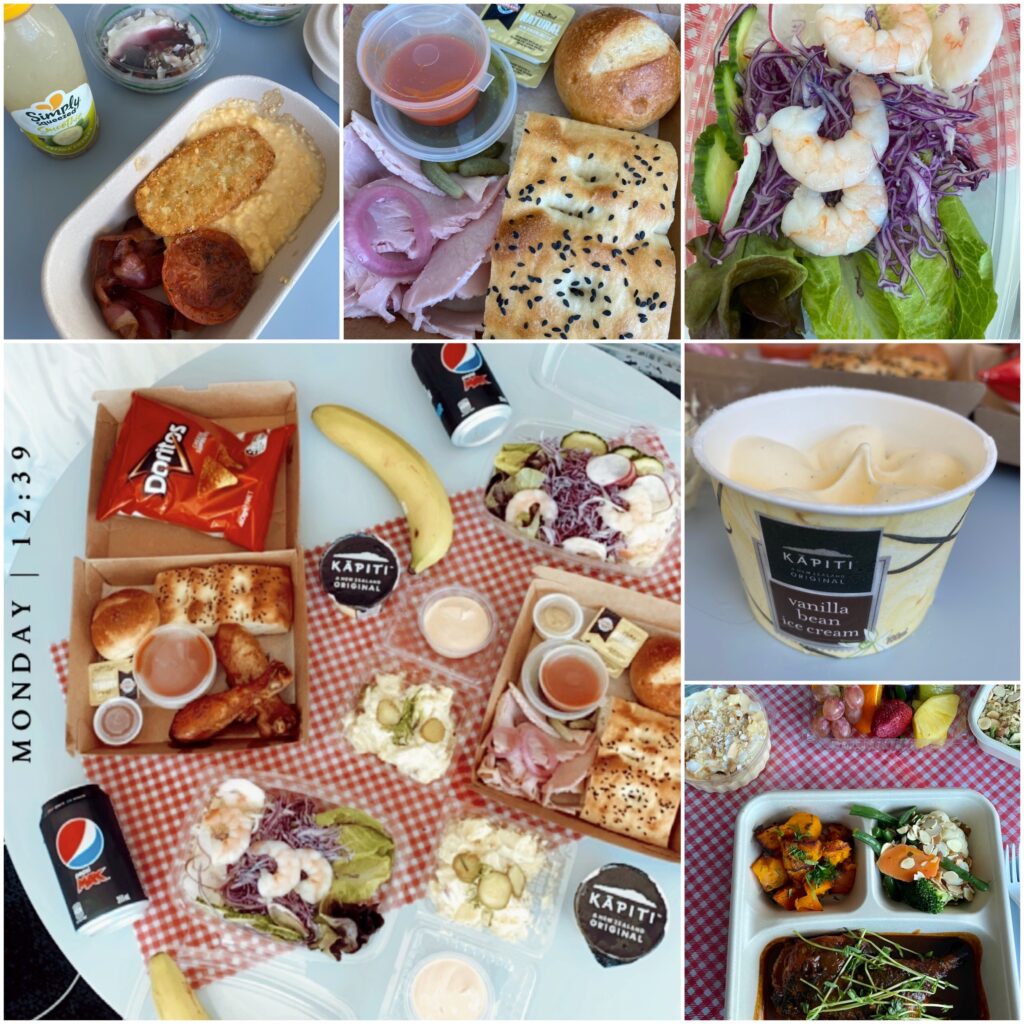
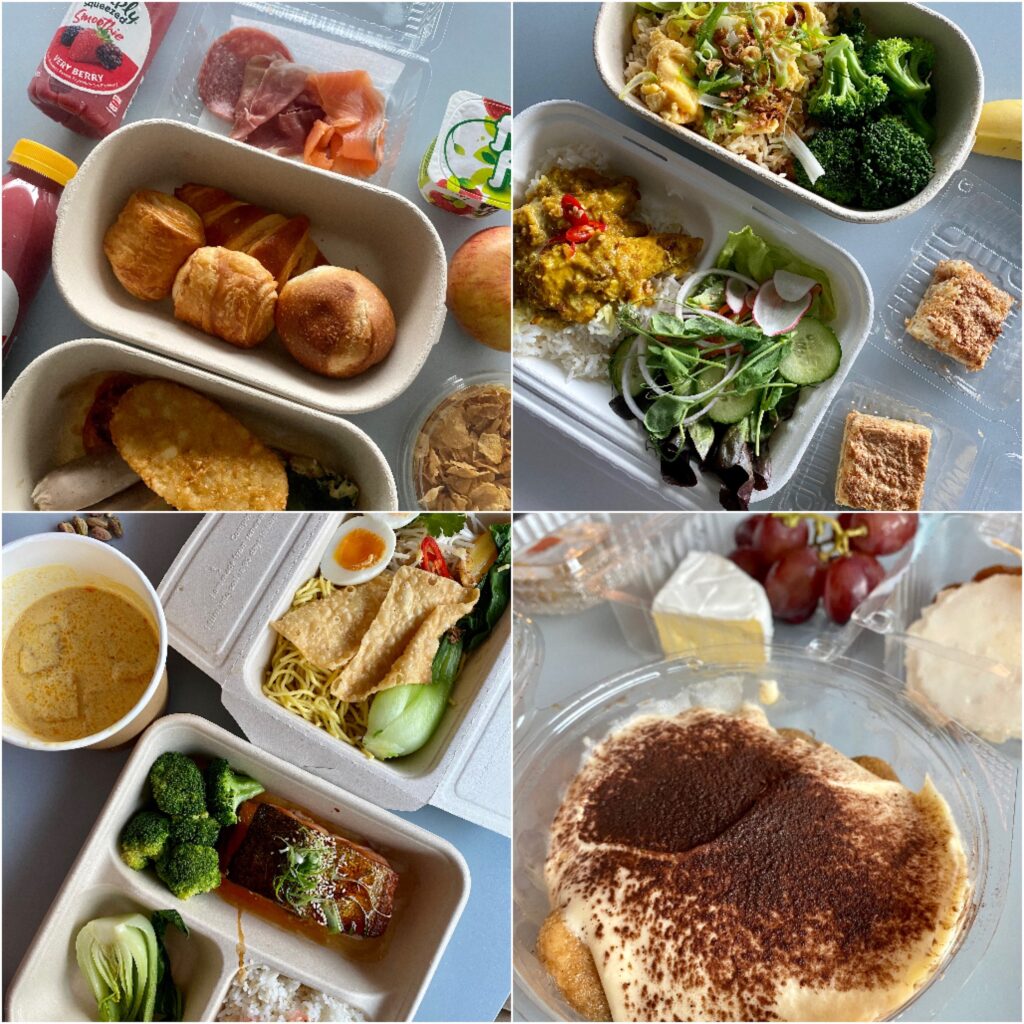
Quality & other considerations
The food was goooood. It often felt like we were eating takeout! Some meals were better than others, of course, but overall the quality and presentation were much better than I would expect in this kind of government-mandated situation. The portions were large (I seriously was never hungry) and they did a good job of including a variety of options to choose from. There were plenty of veggies and healthier options as well.
They asked us several times about our dietary needs and allergies, so it seems like they would do a good job at accommodating any special diets. The types of meals they chose made it easy to substitute certain ingredients, or get rid of them altogether.
Other options
Other than the three scheduled daily meals, the hotel provided us with a room service menu with reasonable prices. They offered snacks like cookies or chips, smaller prepared meals like fries, and (best of all!) wine and beer. The government limits you to one bottle of wine or pack of beer per person per day (they don’t want anyone getting too crazy). In the mornings, you could also order up lattes and other hot drinks from the barista downstairs.
Another option you have for food is ordering it from the supermarket. If you are super picky or are following a very strict diet, this would probably be the way to go. We wanted a few more essentials (liquid hand soap for the bathroom, full-sized toothpaste) and snacks (chips, avocados, oat milk) to get us through so we placed an order from Countdown on our second day.
They have a minimum order amount of $50 and they charge for delivery. I would recommend making one big order for everything you might need when you get there. They inspect all of your items (to make sure you’re not smuggling more alcohol, they know what you’re up to) and bring them up to your room. Super easy!
Outdoor & exercise time
Our hotel had two outdoor areas: the smoking area at the front of the hotel, and the exercise/walking area in the underground parking garage.
The smoking area is just a small patio area facing the street, half of it shaded. There are dots on the ground to maintain social distancing and you are signed in and out by the guard at the door. This area was open all day but could sometimes close when the hotel is processing new arrivals or departures. If you have friends or family that want to “visit” you in isolation, this is where you would go to talk to them through the fence. I liked coming here as it was the only place we could go to soak up some sun.
The exercise area is basically a cordoned-off area of the parking garage. A guard escorts you down and then you could join the walkers in taking laps around the area. This area was open for most of the day. It closed for an hour after lunch for “kids hour” and at night.
Although it was nice to stretch our legs a bit, it does get boring walking around in the same circle over and over. There is a good breeze that passes through, which is nice, but you get no glimpses of the outside world. A note for the tall: some parts of the garage are quite low. Ben is six feet tall and hit his head on a beam a few times.
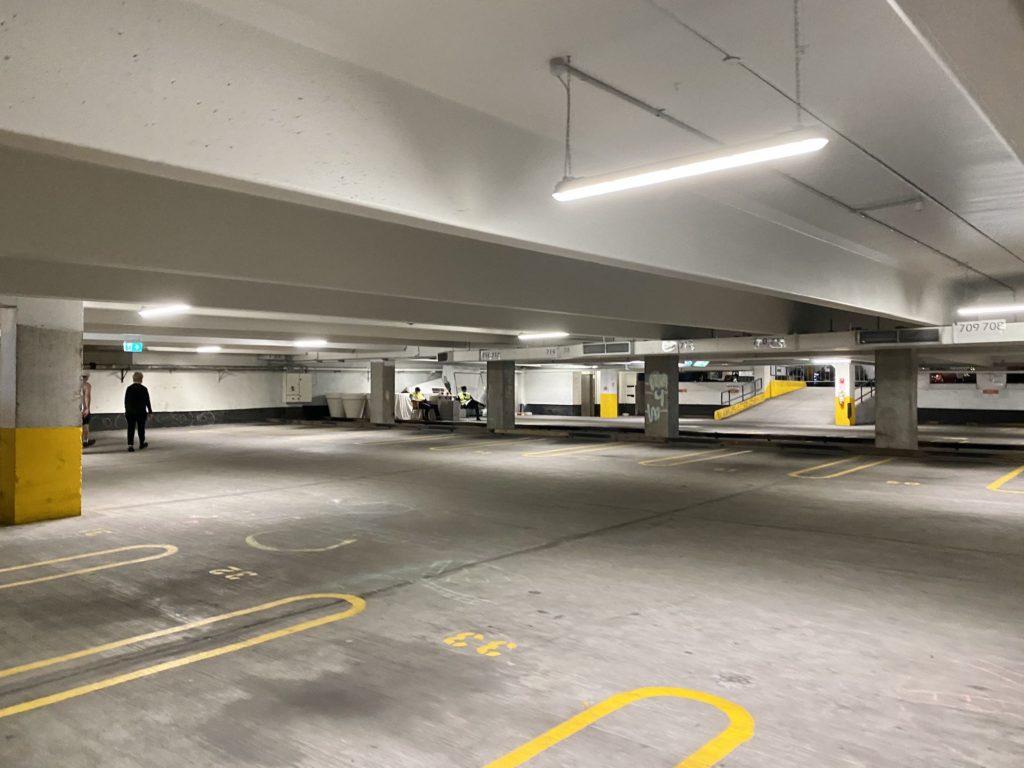
Health check-ups & COVID testing
Every day, a pair of nurses would come around sometime after breakfast to do a quick health check-up. They would ask a bunch of questions about any symptoms we had (sore throat, nausea, loss of taste or smell, etc.) and then take our temperatures with a forehead thermometer. The whole process took less than a minute.
Everybody going through isolation gets to take two COVID nasal swabs – one on day 3 and one on day 11. Not going to lie, my first test was extremely uncomfortable. It seemed like the swab was in my nose for a very long time. All the twisting made my eyes water really badly as well. My second swab was much better and barely felt like anything, so it must depend heavily on the nurse who’s administering it. Both times, a worker knocked on our door the next day and gave us our results back on a piece of paper.
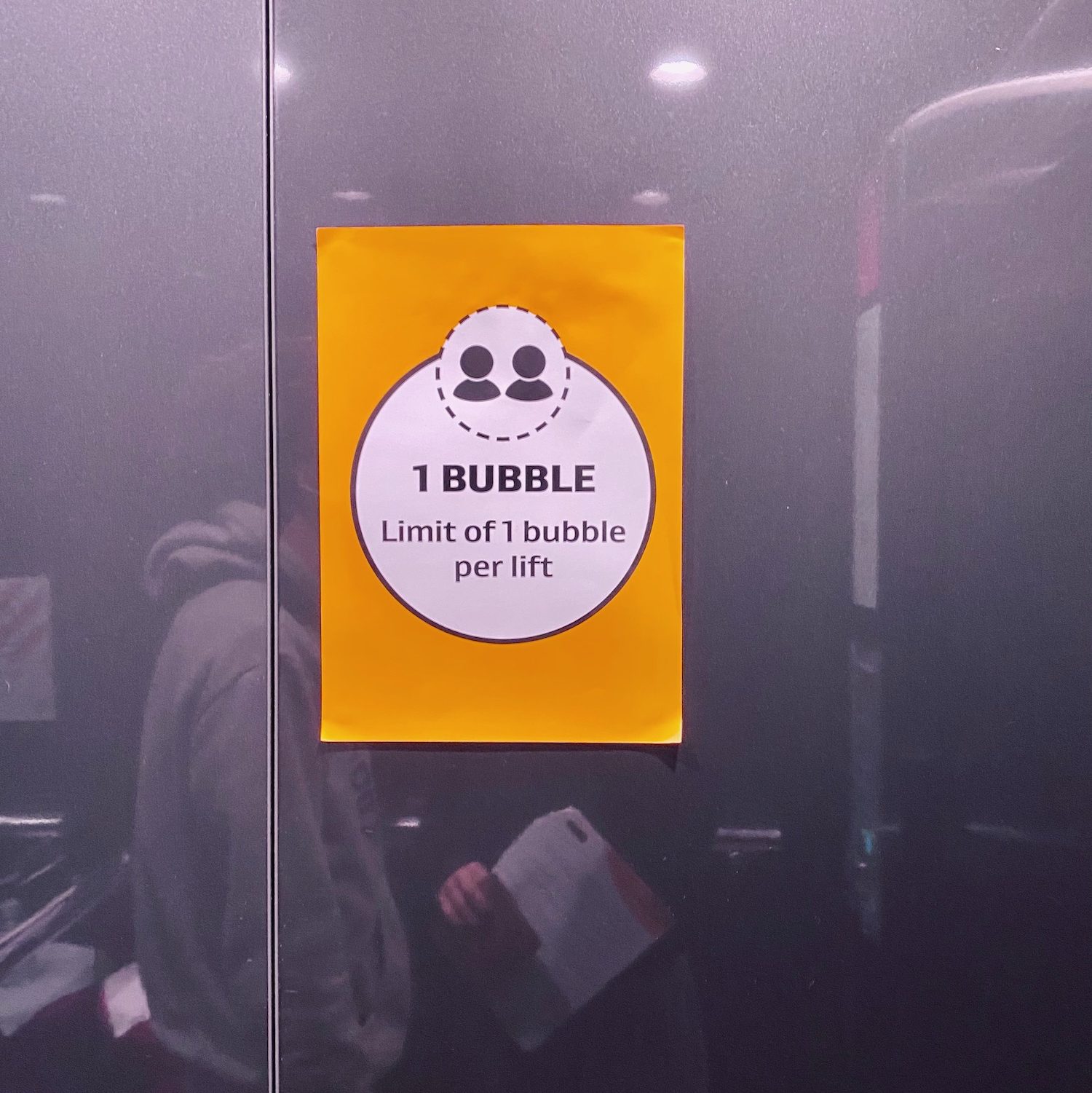
Tips and recommendations
- Bring an HDMI cord! Our room had easy access to a port that let us watch Netflix from our laptops on a big screen.
- If you don’t like instant coffee, I highly recommend buying this portable espresso maker from Amazon! It works with regular Nespresso pods. You pour in hot water and pump the brewed espresso out. It’s small, light, and would be great for camping too!
- If you need a solid surface on which to do a large jigsaw puzzle, just unclip the hinges off of the mini-fridge compartment door. It’s the perfect size to fit a 1000 piece puzzle and it snaps back on easily once you’re done.
- If you’re going through isolation alone, it definitely can get lonely. Make sure you reach out to friends and family on FaceTime or Zoom. The Wellness team at the hotel is also there to help if you need it. There’s information on how to contact them in the welcome packet.
Checking out of New Zealand managed isolation
A few days before our release, we got a call to ask about our plans for onward travel. We had a flight to Christchurch booked for 9:30 am the day of our release, so the employee arranged to get us SkyBus tickets to the Auckland airport (as everyone has different plans upon departure, there isn’t one bus chartered for everyone). They assigned us a time to head downstairs to check out as well since they wanted to keep the crowding at a minimum.
On our last day, we woke up early and got a last health check from the nurses before packing up and heading downstairs. We signed a few forms and received framed certificates saying we had made it through New Zealand managed isolation. We walked a few blocks over to the SkyBus stop and made it to the airport with no problems.
Final thoughts on New Zealand managed isolation
I can honestly say that my New Zealand managed isolation experience was great! I read a few books, watched some movies, and relaxed. Changing my mindset to see it as a two-week break from the stress of the outside world helped tremendously. It also felt like I was living through a bit of history – something strange, but temporary.
There’s a quote I read in a book recently that goes,
If there was an earthquake, you wouldn’t worry about your house or your car. You’d just say, ‘Oh, wow, a new experience.’
Barbarian Days: A Surfing Life
by William Finnegan
I think that’s a great way to approach isolation. Roll with the punches!
If you go into it with no expectations, you’ll have a much easier time adjusting to not being able to do anything. If you’re the type of person that has to stick to a routine for your own sanity, that’s great! But it’s also ok if you find yourself straying from it a bit. No one is going to judge you for drinking a glass of wine at noon on a Tuesday in isolation. Just keep reminding yourself that it’s only two weeks and that you’ll be back to the normal world in no time.
One last thought I have about this whole experience is one of gratitude. I feel lucky to be able to come into a country during this time and be able to live life normally. That’s only possible because of the strict rules put forth by the government. While other countries all over the world are experiencing second and third waves, New Zealand is thriving.
If you have any questions, please let me know in the comments!
Looking for more New Zealand content? This ultimate guide to traveling New Zealand will tell you everything you need to know about the country after making it through isolation.
xoxo Niki
Pin this post to save it for later!
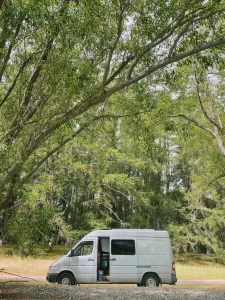
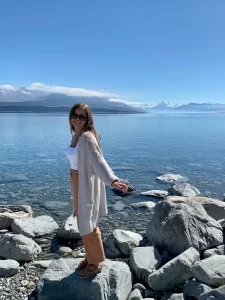
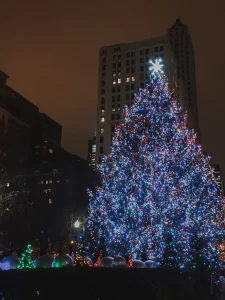
Well thank you Niki! loved how you described Isolation. Will certainly be taking all your information with me.
Twizel, I used to row on lake Ruataniwha, and lived in Clyde.
Thank you again 😃
Thanks for the kind words Sandy! Very cool that you used to row here. I always hear about tons of regattas and championships going on!
Thank you! This was so helpful! I am flying from LAX to Auckland in 8 days. Very excited, nervous, but excited 🙂
Awesome! Good luck in iso! It’ll all be worth it once you get out and are back home 🙂
Wow Niki… So well written and apparently by a very level headed person! I can’t thank you enough! I’m sure I’ll be reflecting on your advice as I count the days to freedom and the Kiwi Christmas holidays. Cheers, M
Thank you so much for the kind words!